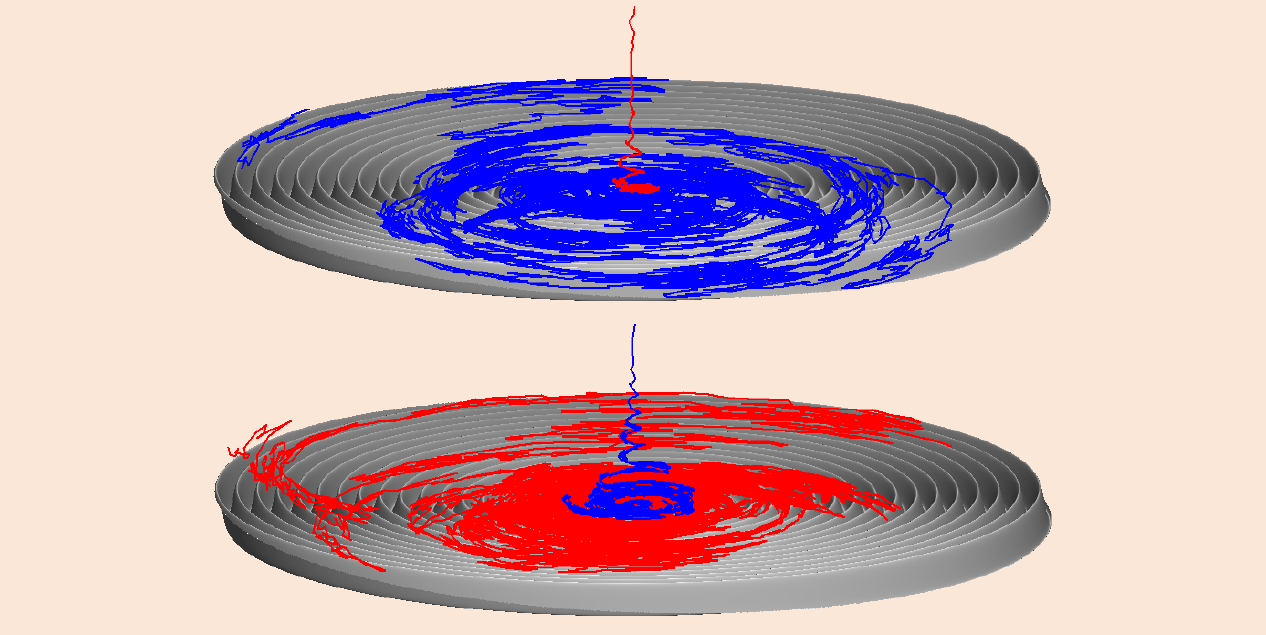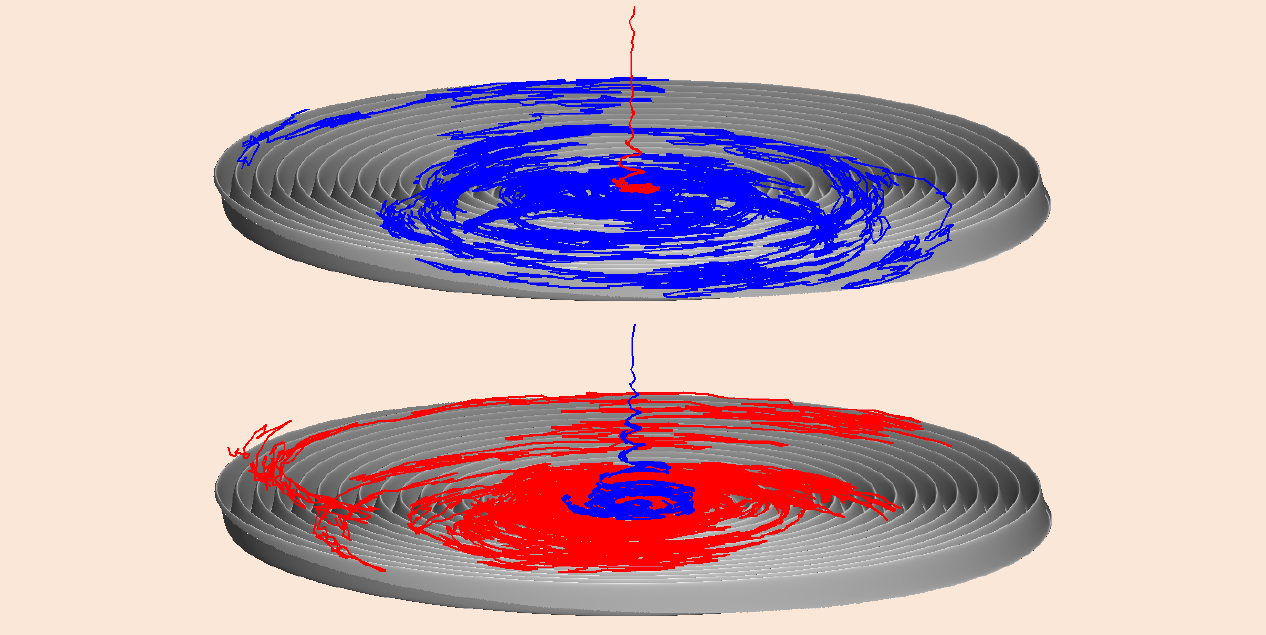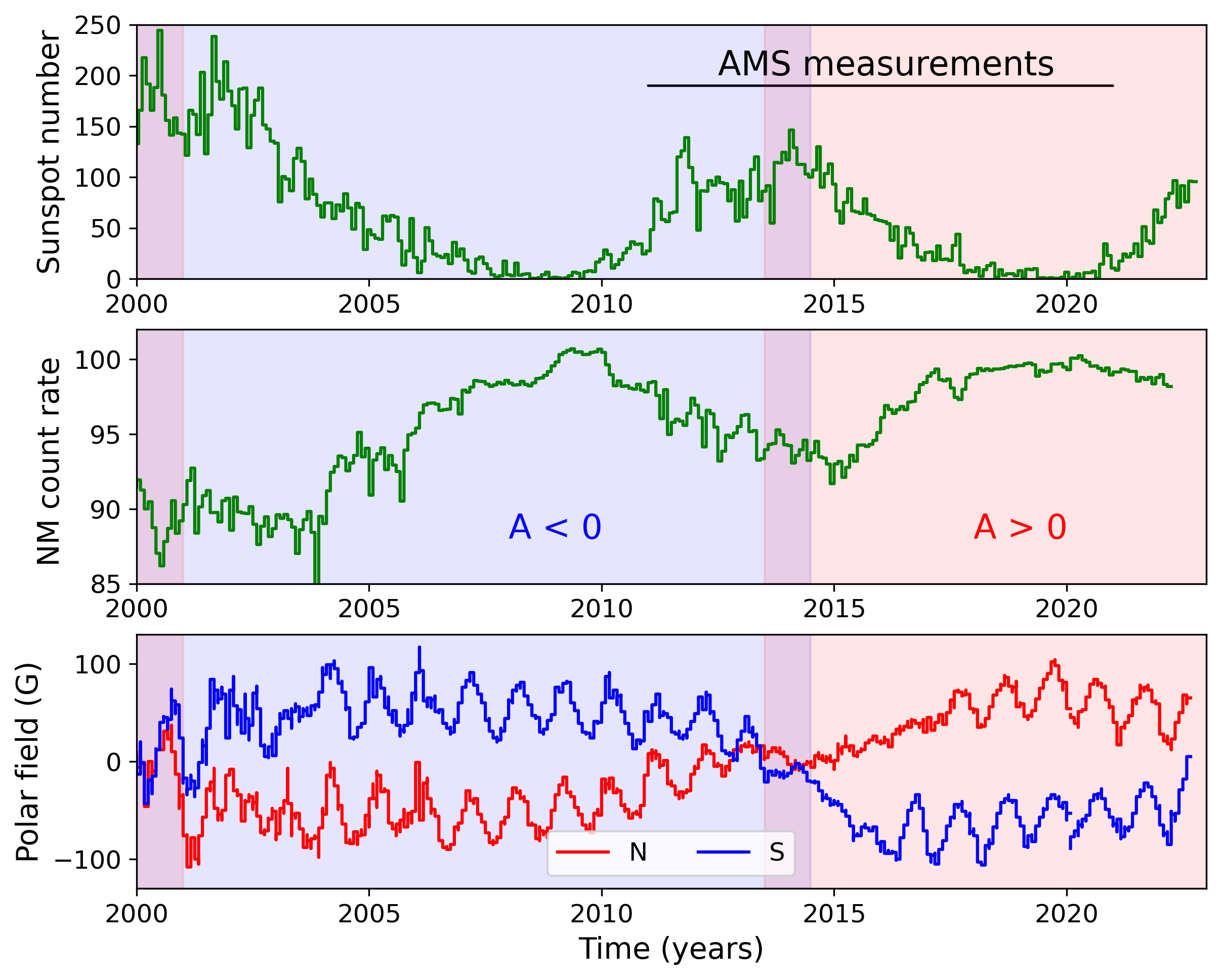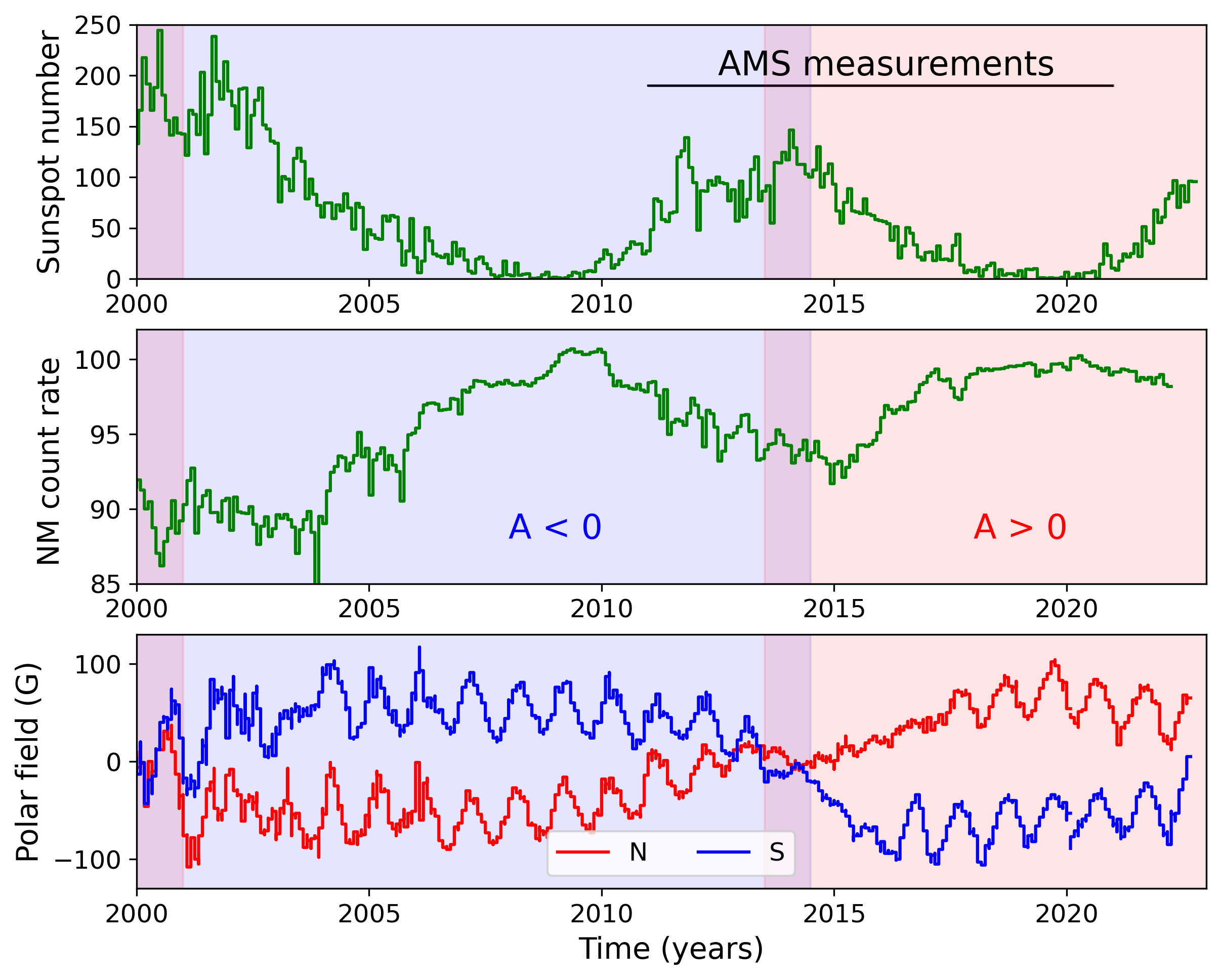Disentangling the Sun’s Impact on Cosmic Rays
Galactic cosmic rays (GCRs) are highly energetic charged particles that are produced through various acceleration mechanisms in astrophysical objects such as supernova remnants. These particles propagate through the Galaxy and can reach the heliosphere, a region dominated by plasma originating from the Sun. Within the heliosphere, GCRs interact with the turbulent plasma environment in a way that decreases their flux, causing them to diffuse in space and to lose energy [1]. Most of the impact of this “solar modulation” on GCRs is independent of particle charge. But GCR drift is also influenced by large-scale gradients in, and curvatures of, the heliospheric magnetic field and by the current sheet—a tenuous structure that separates the heliosphere into regions of opposite magnetic-field polarity [2]. These effects are charge dependent and lead to differences in how GCR electrons and protons propagate on their way to Earth and throughout the Solar System (Fig. 1). The Alpha Magnetic Spectrometer (AMS) Collaboration has now measured these differences with unprecedented accuracy [4], allowing scientists to probe the fundamental physics of GCR transport in the turbulent heliosphere.
The solar modulation of GCRs changes over time because of an 11-year solar-activity cycle and a 22-year cycle in the polarity of the heliospheric magnetic field (Fig. 2). The progression of the activity cycle can be observed through the sunspot number—an index that quantifies the abundance of dark spots associated with regions of high magnetic-field strength on the Sun’s surface. Higher sunspot numbers indicate more-intense solar activity. These two cycles affect the number of GCRs detected on Earth by instruments called neutron monitors.
The polarity cycle is defined as positive (denoted by A > 0) when the northern solar magnetic field is directed away from the Sun, and as negative (A < 0) when this field is pointed toward the Sun. During the A > 0 cycle, positively charged particles drift toward the Sun along the heliospheric polar regions, while electrons mainly drift along the heliospheric current sheet in the equatorial regions (Fig. 1). When the polarity cycle switches, however, these behaviors are swapped [5]. Astrophysicists understand this global drift picture qualitatively, but many unanswered questions remain on the quantitative drift effects. One key question is how turbulence in the heliospheric magnetic field disrupts the drift process [6].
Observing these charge-dependent effects is problematic because the fluxes of oppositely charged particles must be measured simultaneously and with high precision. Previous studies relied mostly on comparing different polarity cycles. But this method led to ambiguous results because GCR transport is also influenced by time-dependent changes in heliospheric plasma. Essentially, no two solar cycles are exactly alike, and a meaningful comparison of cosmic-ray transport between them would require identical solar-modulation conditions.
The AMS Collaboration used a detector onboard the International Space Station to precisely measure daily fluxes of GCR electrons and protons between 2011 and 2021. The researchers analyzed both long- and short-term changes in the relationship between these two fluxes. They discovered that on long timescales, this relationship shows hysteresis, which, as usual, indicates a system with memory. Drift effects lead to differences in the transport speed and direction of electrons and protons through the heliosphere because these particles propagate on different timescales. As a result, oppositely charged particles are stored differently from each other within the heliosphere [7]. The long-term changes in the flux relationship can be understood in terms of the solar-activity and magnetic-polarity cycles. But the short-term changes are probably related to transient solar phenomena, such as coronal mass ejections, that need to be investigated in more detail.
These results will allow GCR drift effects—and especially the turbulence-induced disruption of such effects—to be investigated with unprecedented accuracy. Additionally, some aspects of the findings challenge contemporary understanding of GCR transport. For example, these results show, for some time intervals, recurrent 27-day flux variations that are larger at higher particle energies. In contrast, theory predicts that these variations should disappear at such energies. Furthermore, the recurrent electron-flux variations on short timescales represent a strong observational constraint on models for the time-dependent solar modulation of GCRs.
Reproducing these precision measurements for both GCR electrons and protons using solar-modulation models will lead to valuable insights into the mechanisms governing the transport of these particles. Once these transport processes are fully understood, progress can be made on achieving the “holy grail” of solar-modulation studies: the ability to accurately predict the GCR flux and its associated radiation levels in order to safeguard human exploration of the Solar System.
References
- H. Moraal, “Cosmic-ray modulation equations,” Space Sci. Rev. 176, 299 (2011).
- O. Khabarova et al., “Current sheets, plasmoids and flux ropes in the heliosphere,” Space Sci. Rev. 217, 38 (2021).
- R. D. Strauss et al., “The heliospheric transport of protons and anti-protons: A stochastic modelling approach to Pamela observations,” Astroparticle, Particle, Space Physics and Detectors for Physics Applications - Proceedings of the 13th ICATPP Conference, edited by G. Simone et al. (World Scientific Publishing, New Jersey, 2012), p. 288[Amazon][WorldCat].
- M. Aguilar et al. (AMS Collaboration), “Temporal structures in electron spectra and charge sign effects in galactic cosmic rays,” Phys. Rev. Lett. 130, 161001 (2023).
- J. R. Jokipii et al., “Effects of particle drift on cosmic-ray transport. I - General properties, application to solar modulation,” Astrophys. J. 213, 861 (1977).
- N. E. Engelbrecht et al., “Toward a greater understanding of the reduction of drift coefficients in the presence of turbulence,” Astrophys. J. 841, 107 (2017).
- R. D. Strauss et al., “On the propagation times and energy losses of cosmic rays in the heliosphere,” J. Geophys. Res.: Space Phys. 116 (2011).







